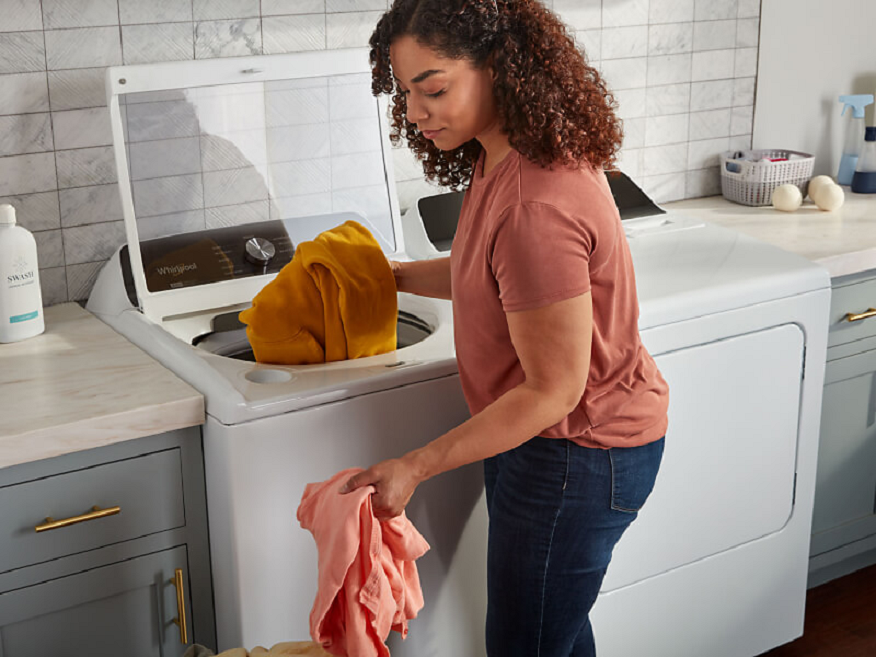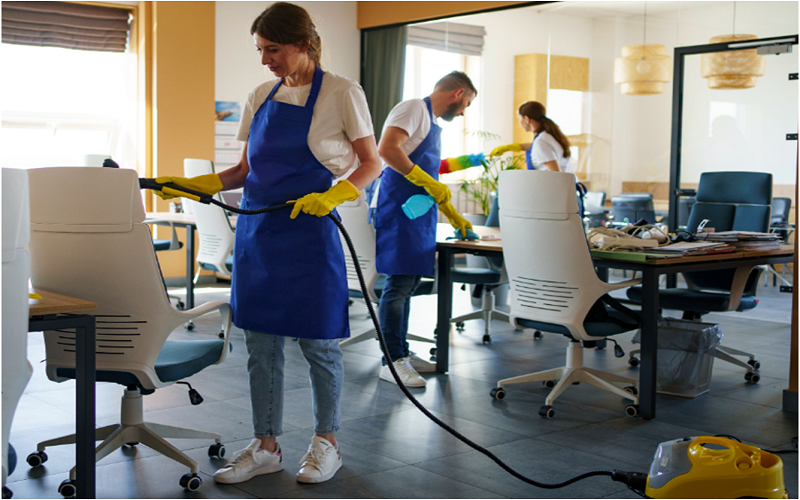A French family launches an average of 220 detergents per year. This means more than 26 liters of liquid detergent or 40 kg of powder detergent that go into our waters to be treated. Do these numbers scare you? Don’t panic, we can all adapt our daily habits to clean laundry , without polluting more. It is still necessary to have good practices. An average household launches about 5 machines per week. Doing laundry is so automatic that sometimes we forget the essentials.
In this article, we give you 6 simple and ecological tips for washing your laundry .
Tip 1: Treat stains naturally before washing
You just got a stain on your brand new blouse. Your first instinct is probably to put it directly in the washing machine to erase all traces of this incident. But when you take your garment out of the washing machine, it’s worse than before! Not only is the stain still present, but this time it is actually embedded in the fabric.
Natural materials such as cotton, linen and wool are very absorbent, the longer you wait the harder the stain will be to remove.
So, adopt the right reflexes. When a stain arrives on your pretty clothes, the best tip is to treat it as soon as possible, using a natural stain-removing soap before washing.
Tip 2: Sort laundry to preserve it
After checking on the label that your laundry is machine washable, the first good practice is to sort your clothes by color.
Separating the light and dark fabrics before washing the laundry will save you some unpleasant surprises when hanging it out.
Also avoid putting new clothes in the washing machine with your usual dirty laundry. It is also preferable to wash them separately during the first machines, preferably cold, in order to fix the color on the fabric and to avoid bleeding.
Make a habit of doing a different detergent for washing your delicates . Protect your very fragile laundry (such as underwear) in a washing net , in order to protect it from friction.
Tip 3: Adapt the amount of laundry to the capacity of the washing machine
Needless to say, putting on a single t-shirt with a long program is a waste of water and energy. So unless it’s an emergency, wait until you have enough to fill a washing machine .
But be careful, if you want your laundry to be properly washed, your washing machine must not be completely full. It should be ¾ full so that the clothes can spin freely in the drum.
If you overfill, your laundry will not be properly cleaned and will have a bad smell at the end of the wash cycle . In the long term, you risk clogging up your washing machine and even damaging the drum by causing it to move during the spin cycle.
Tip 4: Adapt the temperature to the textiles for washing clothes
Of course, you must carefully follow the symbols and instructions on the care label, they have been designed to keep your clothes in good condition while respecting the environment. Nevertheless, here are some indications on the different washing cycles.
The 30° cycle: It is ideal for the majority of everyday laundry, as it better preserves colors and textiles while halving the energy required for washing (3 times less than a 90° cycle). For this, our detergent kit for everyday laundry is ideal.
The 40°C cycle: For your dirtier clothes (sports, underwear, sick person, etc.), choose this temperature for washing laundry , which is compatible with many textiles. The Institut Pasteur has shown that washing clothes at 40°C eliminates 500 times more bacteria, especially those responsible for bad smells in clothes.
Cycles at 60° and more: They are used for laundry that you really want to wash thoroughly, such as household linen, sheets, non-fragile body linen, baby linen.
To clean your laundry ecologically and thoroughly, the ideal is to use a 100% natural laundry powder. From 40°, it is activated with the temperature of the water and allows the textile fibers to be thoroughly washed.
Tip 5: Choose your detergent and adapt the dosage
Think the more detergent you put in, the cleaner your laundry will be? It’s wrong ! On the contrary, an overdose risks leaving traces on your linen and once again, clogging up your washing machine . To dose your detergent correctly, adapt it according to the quantity of laundry to be washed and the hardness of your water.
To wash clothes , choose a detergent with the Ecocert label . This is the most demanding standard on the market, among several other labels. Choosing an eco-certified detergent also allows you to avoid the ingredients that are most harmful to the environment and your health.
Tip 6: Avoid fabric softener
Fabric softeners should be avoided due to their impact on health and the environment . They coat the surface of a fabric with cationic surfactants which are electrically charged, causing the threads to “rise” from the surface. This gives a softer and fluffier texture. These surfactants are the first factors of irritation and allergy.
To wash your linen , prefer to soften the water by adding a dose of household vinegar (approximately 40 ml) in the compartment reserved for the fabric softener. The vinegar will have the effect of fighting against lime deposits on the fibers of the clothes and in the machine. This will limit irritation for the most sensitive skin and will contribute to the proper maintenance of your washing machine, without leaving an odor.





